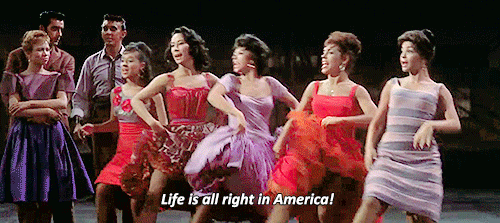


05/25/2007
George Borjas has a new blog, and has an item called Sondheim on Migration:
Ever since I was first exposed to the music from West Side Story as a teenager, some of Stephen Sondheim’s lyrics stuck with me. They appear in the song America. In the movie version, Bernardo and Rita are arguing over the costs and benefits of migrating from Puerto Rico to New York.
BERNARDO: I think I'll go back to San Juan
ANITA: I know a boat you can get on
BERNARDO: Everyone there will give big cheer
ANITA: Everyone there will have moved here
Given the huge volume of migration from Puerto Rico to the United States in the 1950s, it is not surprising that Sondheim expected Puerto Rico to empty out. But the fact is that it didn’t. And therein lies one of the great unsolved puzzles in the study of migration. There are no legal restrictions whatsoever that hamper the mobility of Puerto Ricans to the mainland — they are American citizens by birth — and transportation costs are low. Yet here we are, 60 years on (to use an Elton John song title) from the onset of Puerto Rican migration after World War II, and there are still quite a few people left in Puerto Rico. Why hasn’t Puerto Rico emptied out?
I've done a couple of items on Puerto Rico, and in Wall Street (Journal) Story, in 2001, I pointed out that while Michael Barone said that
Mexico’s population growth has slowed sharply: It will probably not need a big increase in the number of jobs and probably not generate such a large percentage of immigrants to the U.S. in the 2010s as it did in the 1990s. It is possible that the flows of people across the border will in time be in equilibrium, as the flow of people from Puerto Rico to the mainland U.S. has been since 1961.
the flow was not actually in equilibrium. According to the CIA World Factbook the net migration rate is -1.09 per 1000 population, meaning people are still leaving. (For comparison, the current official net immigration rate for the United States is +3.05 per 1000 population, and if that doesn’t sound like a lot, it helps to think of it as being like compound interest.)
Barone actually repeated this error in 2006, in a Wall Street Journal article called The Newest Americans, [April 11, 2006] which I blogged about here. But while Puerto Ricans are still coming to the mainland, some of them are staying home.
Borjas has two questions, one of which is "Why hasn’t Puerto Rico emptied out?," and why is there still "a sizable income differential between the United States and Puerto Rico." (In fact, the actual question he asks is "Whatever happened to the factor price equalization theorem?," which is too technical for me.)
I have only non-economic to suggest, but one reason for not leaving Puerto Rico is that there’s "no place like home," and it must certainly not be crowded.
As for having lower incomes, planting the American flag on Puerto Rico in 1898 changed the government, but not the culture, which is basically Latin American. Culture takes a long time to change — Louisiana still has a Latin political tradition, 200 years after the Louisiana Purchase. Read the whole item for the technical details, and read Borjas’s blog here.